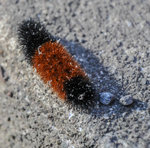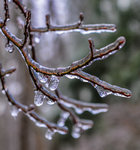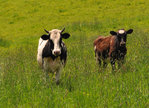 Narrowsburg
NarrowsburgLight Rain Fog/Mist, 43°
Wind: 8.1 mph
 Narrowsburg
NarrowsburgWe’ve all heard it bandied about: “Red sky at night, sailor’s delight; red sky at morning, sailors take warning,” but is there any validity to the old proverb? According to …
Stay informed about your community and support local independent journalism.
Subscribe to The River Reporter today. click here
This item is available in full to subscribers.
Please log in to continue |



We’ve all heard it bandied about: “Red sky at night, sailor’s delight; red sky at morning, sailors take warning,” but is there any validity to the old proverb? According to the almighty internet, the simple answer is a resounding yes, and Scientific American magazine concurs.
In fact, an article I recently scanned stated that, “Indeed, there is scientific validity to the adage,” and that “the concept is [more than] two thousand years old.”
I grew up hearing expressions like that passed down by my relatives, who learned them from theirs. In my experience, most are based in folkloric wisdom and truth. A few nights ago, while strolling through the woods aided only by the light of the silvery moon, another sprang to mind. “Ring around the sun or moon means rain or snow are coming soon.” I couldn’t find a source for that one, but “The Google” confirmed that, “According to folklore, the ring, or ‘lunar halo,’ is caused by the refraction of light from ice crystals that are suspended in thin, wispy cirrus clouds at high altitudes.” And then it snowed.
I’m fairly sure that my great-grandmother did not know anything about ice crystals in clouds, but understood the truth of the words she learned from her mother and shared them with my mom who, in turn, told me, and so on and so forth.
Which leads me to the woolly bear, one of my favorite prognosticator’s of wintry things to come. Named so because of the long, thick hairs covering the body of the immature larva of what will eventually become a tiger moth, the woolly bear has long been one of my favorite predictors, and I still swear by the orange-and-black caterpillar’s ability to see into the future.
“Stuff and nonsense,” a city-dwelling friend intoned after I told her that I had spotted my first one last October and was “concerned about how cold it will be.” However, writer Elyse Smith (WGRZ of Buffalo, NY) agrees with me—sort of. “Each fall,” she wrote, “these caterpillars leave their home plants, which they feasted from all summer, to find a spot to ride out the winter. That’s when they can be seen and their fuzzy coats deciphered for their winter forecast.” The NBC affiliate felt it necessary to add a disclaimer to her on-air piece, which stated, “There is no scientific evidence that proves these little creatures can actually or accurately predict wintertime weather.” Wow, man, way to avoid a caterpillar-based lawsuit.
Smith elaborates in her television station reporting of the woolly bear’s abilities, explaining that, “According to folklore, counting the amount [and density] of colored bands may show a further distinction of the coming winter.
“For example,” she writes, shoring up my convictions, “More black bands near its head could mean a cold and snowy start and vice versa.” I found a charming, folksy, hand-drawn illustration online created by someone identified only as “druidgarden” that had no disclaimer (respect!) whatsoever. See it for yourself at www.bit.ly/druidgarden. According to druidgarden, my home-grown woolly bear indicates that we will have a “moderately harsh” winter this year. Way to commit, future tiger moth.
Still, the old-timey prediction made me yearn for more and I continued to research what that TV station had the nerve to refer to as “old wives tales.” Naturally, the Farmer’s Almanac popped up. In business since 1818, the almanac is the flagship (IMHO) of seasonal weather predictions and, as such, has gained the trust of farmers (and folks just like me) for generations. In this year’s guide, I found an article titled “20 signs of a hard winter ahead.” In addition to “thicker than normal onions or corn husks” (I neglected to check) and “woodpeckers sharing a tree” (I thought they were simply in love), there were warnings like “thick hair on the nape of a cow’s neck” (never really knew where the nape was) and “spiders entering the house in great numbers.” Spiders are always entering my house in great numbers, but I always thought it was just to freak me out. Just looking at page 7 gives me the willies.
There was more than one that I had never heard, including this olde-fashioned rhyme: “See how high the hornet’s nest, ‘twill tell how high the snow will rest.”
“Sounds very pilgrim-ish,” I said to the dog, who loves to hear me read out loud. She cocked her adorable head, unsure of what a pilgrim is.
Coming in at number 18 was my beloved woolly bear. “According to folklore, if the woolly worm caterpillar’s orange band is narrow,” the 2020 almanac states, “the winter will be snowy. Conversely, a wide orange band means a mild winter (all black caterpillars are not woolly worms). And fuzzier-than-normal woolly worm caterpillars are said to mean that winter will be very cold.”
Have I mentioned last week’s ice storm? Or the two feet of snow that happened just before that? We woke up on Monday to a gorgeous winter wonderland that caused my dog to squeal with glee before I slung the camera ‘round my neck and trudged out into the woods, Dharma nipping at my heels, both of us honestly thrilled to live in the woods, communing with woodpeckers, cows and corn husks. As for the woolly bear and its prediction? I took a picture, so time will tell.
Fun fact: “By The Light of the Silvery Moon” is a popular song. The music was written by Gus Edwards and the lyrics by Edward Madden. The song was published in 1909 and first performed on stage by Lillian Lorraine in the Ziegfeld Follies of 1909.
Comments
No comments on this item Please log in to comment by clicking here